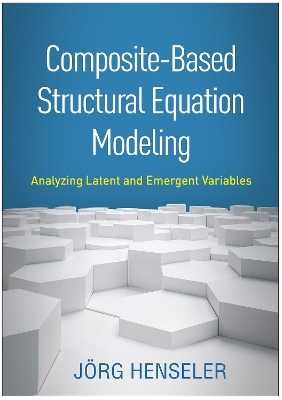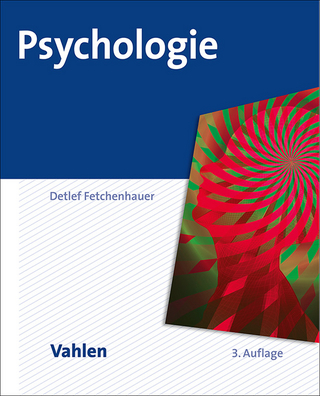
Composite-Based Structural Equation Modeling
Guilford Press (Verlag)
978-1-4625-4560-5 (ISBN)
Jörg Henseler, PhD, is Full Professor and Chair of Product–Market Relations in the Faculty of Engineering Technology of the University of Twente in The Netherlands. He is also Visiting Professor at NOVA Information Management School, NOVA University of Lisbon, Portugal, and Distinguished Invited Professor in the Department of Business Administration and Marketing at the University of Seville, Spain. His broad-ranging research interests encompass empirical methods of marketing and design research as well as the management of design, products, services, and brands. A highly cited researcher, Dr. Henseler is a leading expert on partial least squares (PLS) path modeling, a composite-based structural equation modeling (SEM) technique that bridges design and behavioral research. He has written dozens of scholarly articles, edited or authored several books, served as guest editor for three special journal issues, and chaired conferences on PLS. He serves on several journal editorial boards and has been an invited speaker on SEM at universities around the world. Dr. Henseler chairs the scientific advisory board for the ADANCO software program and regularly provides seminars on PLS path modeling at the PLS School.
Preface
1. Introduction
1.1. The Nature of Structural Equation Modeling
1.2. What is Composite-Based SEM?
1.3. For Which Purpose Should One Use Composite-Based SEM?
1.3.1. Using Composite-Based SEM for Confirmatory Research
1.3.2. Using Composite-Based SEM for Explanatory Research
1.3.3. Using Composite-Based SEM for Exploratory Research
1.3.4. Using Composite-Based SEM for Descriptive Research
1.3.5. Using Composite-Based SEM for Predictive Research
1.3.6. When to Use Composite-Based SEM?
1.4. Software Tutorial: Getting Started
1.4.1. First Steps in ADANCO
1.4.2. First Steps in cSEM
2. Auxiliary Theories, with Florian Schuberth
2.1. The Need for Auxiliary Theories
2.2. Different Types of Science
2.3. TheAuxiliaryTheory of Behavioral Science: MeasurementTheory
2.4. The Auxiliary Theory of Design Science: Synthesis Theory
3. Model Specification
3.1. What Is A Structural Equation Model?
3.2. The Outer Model
3.2.1. Composite Models
3.2.2. Reflective Measurement Models
3.2.3. Causal-Formative Measurement Models
3.2.4. Single-Indicator Measurement Models
3.2.5. Categorical Variables
3.3. The Inner Model
3.4. Software Tutorial: Model Specification
3.4.1. Specifying Structural Equation Models in ADANCO
3.4.2. Specifying Structural Equation Models in cSEM
4. Model Identification
4.1. The Necessity of Identification
4.2. Ensuring Model Identification in Composite-Based SEM
4.3. Ensuring Empirical Identification in Composite-Based SEM
4.4 ‘Chance Correlations’
4.4.1. The Problem with ‘Chance Correlations’
4.4.2. Avoiding ‘Chance Correlations’
4.5. The Dominant Indicator Approach As a Solution to Sign Indeterminacy
4.6. Identification Rules
5. Model Estimation
5.1. Composite-Based Estimators for Composite Models
5.1.1. Stand-Alone Constructions: Sum Scores, Preset Weights, and Principal Components
5.1.2. The Partial Least Squares Path Modeling Algorithm
5.1.3. Generalized Structured Component Analysis
5.2. Composite-Based Estimators for Reflective Models
5.2.1. Consistent Partial Least Squares
5.2.2. Sum Scores with Correction for Attenuation
5.3. Fitting Functions
5.4. Tutorial: Model Estimation
5.4.1. Estimating Models Using ADANCO
5.4.2. Estimating Models Using cSEM
6. Global Model Assessment: Model Fit
6.1. The Motivation for Model Fit
6.2. Model Fit Tests
6.2.1. Non-Parametric Model Fit Tests
6.2.2. Parametric Model Fit Tests
6.3. Model Fit Indices
6.3.1. Standardized Root Mean Squared Residual (SRMR)
6.3.2. Root Mean Square Residual Covariance (RMSθ)
6.3.3. Fit Measures Provided by Covariance-based SEM
6.4. What If Model Fit Is Low?
6.5. Beware of Alleged Goodness of Fit Indices
6.5.1. Four “Goodness of Fit Indices” That Are Not Model Fit Indices
6.5.2. The Different Meanings of Fit
6.6. Tutorial: Model Testing
6.6.1. Using ADANCO for Model Testing
6.6.2. Using cSEM for Model Testing
7. Local Model Assessment
7.1. The Need for Reliability and Validity
7.2. Assessing Composite Models of Emergent Variables
7.2.1. Nomological Validity
7.2.2. The Reliability of Composites
7.2.3. Weights
7.3. Assessing Reflective Measurement Models of Latent Variables
7.3.1. Construct Validity
7.3.2. Unidimensionality
7.3.3. Discriminant Validity
7.3.4. Reliability of Construct Scores
7.4. Assessing Causal-Formative Measurement Models
7.5. Assessing Inner Models
7.5.1. R2 and Adjusted R2
7.5.2. Inter-Construct Correlations
7.5.3. Path Coefficients
7.5.4. Indirect Effects
7.5.5. Total Effects
7.5.6. Effect Size (Cohen’s f 2)
7.6. Inferential Statistics and the Bootstrap
7.7. Construct Scores
7.8. What If There Is No Output?
7.9. Tutorial: Model Assessment
7.9.1. Model Assessment Using ADANCO
7.9.2. Model Assessment Using cSEM
8. Confirmatory Composite Analysis, with Florian Schuberth
8.1. Motivation
8.2. Confirmatory Composite Analysis: Model Specification
8.3. Confirmatory Composite Analysis: Model Identification
8.4. Confirmatory Composite Analysis: Model Estimation
8.5. Confirmatory Composite Analysis: Model Testing
8.6. Tutorial: Confirmatory Composite Analysis
8.6.1. Confirmatory Composite Analysis Using ADANCO
8.6.2. Confirmatory Composite Analysis Using cSEM
9. Mediation Analysis
9.1. The Logic of Mediation
9.2. Mediation Analysis Using Composite-based SEM
9.3. Tutorial: Mediation Analysis
9.3.1. Mediation Analysis Using ADANCO
9.3.2. Mediation Analysis Using cSEM
10. Second-Order Constructs
10.1. A Typology of Second-Order Constructs and Their Use
10.2. Modeling Type-I Second-Order Constructs: LatentVariablesMeasured by Latent Variables
10.3. Modeling Type-II Second-Order Constructs: Emergent Variables Made of Latent Variables
10.4. Modeling Type-III Second-Order Constructs: Latent Variables Measured by Emergent Variables
10.5. Modeling Type-IV Second-Order Constructs: Emergent Variables Made of Emergent Variables
10.6. Modeling Type-V Second-Order Constructs: Latent Variables Measured by Different Types of Variables
10.7. Modeling Type-VI Second-Order Constructs: Emergent Variables Made of Different Types of Variables
10.8. Tutorial: Second-Order Constructs
10.8.1. Modeling Second-Order Constructs with ADANCO
10.8.2. Modeling Second-Order Constructs with cSEM
11. Analyzing Interaction Effects
11.1. The Logic of Interaction Effects
11.2. Estimating Interaction Effects with Composite-Based SEM
11.2.1. Multigroup Analysis
11.2.2. The Two-Stage Approach for Analyzing Interaction Effects
11.2.3. The Orthogonalizing Approach for Analyzing Interaction Effects
11.3. Visualizing Interaction Effects
11.3.1. Surface Analysis
11.3.2. Spotlight Analysis
11.3.3. Floodlight Analysis
11.4. Three-way Interactions
11.5. Nonlinear Effects
11.6. Tutorial: Interaction Effects
11.6.1. Analyzing Interaction Effects Using ADANCO
11.6.2. Analyzing Interaction Effects Using cSEM
12. Importance–Performance Analysis
12.1. Nature and Fields of Application
12.2. A Step-by-Step Guide to Conducting IPA Using Composite-Based SEM
12.3. Tutorial: Importance–Performance Analysis
12.3.1. Using ADANCO for Importance–Performance Analysis
12.3.2. Using cSEM for Importance–Performance Analysis
References
Author Index
Subject Index
Acronyms
Glossary
About the Author
Disclosure
| Erscheinungsdatum | 24.02.2021 |
|---|---|
| Verlagsort | New York |
| Sprache | englisch |
| Maße | 178 x 254 mm |
| Gewicht | 820 g |
| Themenwelt | Geisteswissenschaften ► Psychologie ► Allgemeine Psychologie |
| Sozialwissenschaften ► Pädagogik ► Allgemeines / Lexika | |
| ISBN-10 | 1-4625-4560-2 / 1462545602 |
| ISBN-13 | 978-1-4625-4560-5 / 9781462545605 |
| Zustand | Neuware |
| Informationen gemäß Produktsicherheitsverordnung (GPSR) | |
| Haben Sie eine Frage zum Produkt? |
aus dem Bereich


